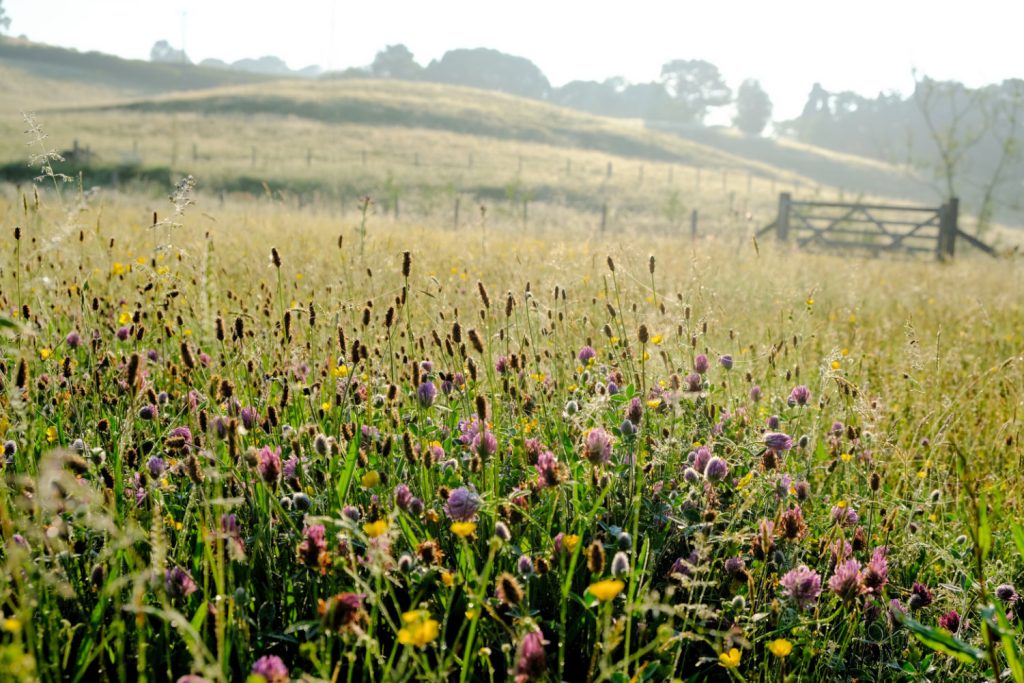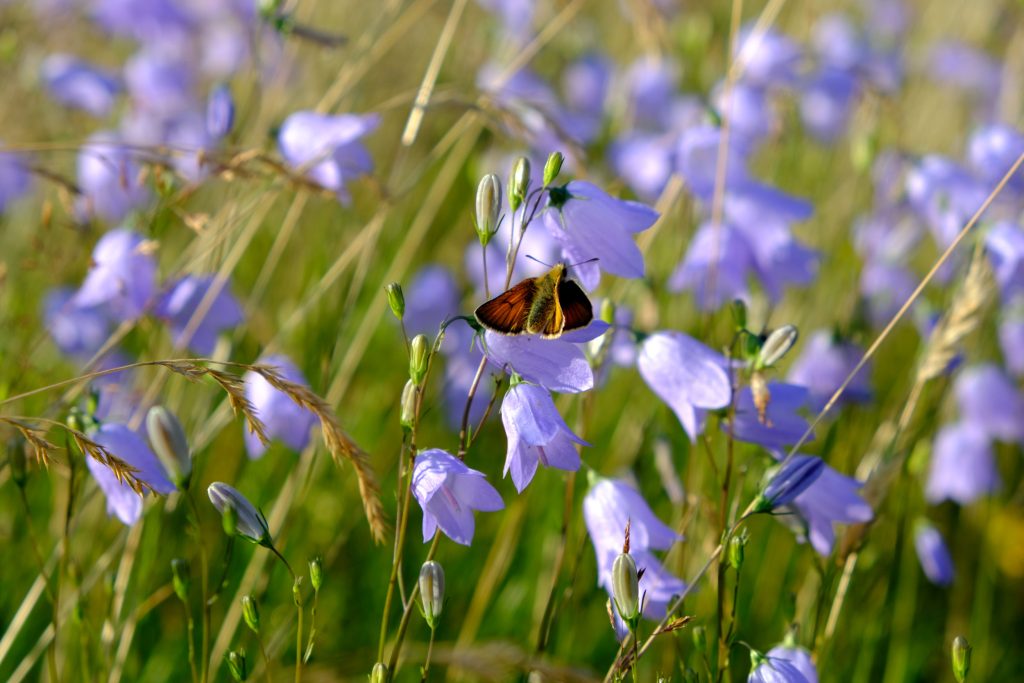Views sought on Shropshire and Telford & Wrekin Local Nature Recovery Strategy (LNRS)
Local Nature Recovery Strategy seeks views from farmers, landowners and the public.

Shropshire, Telford and Wrekin Local Nature Recovery Strategy logo
Farmers, landowners, and local communities in Shropshire and Telford & Wrekin are invited to offer their perspectives and share their views on the region’s natural environment to assist in shaping and preserving its features for future generations.

Meadow, photo credit: Sarah Jameson
The two surveys, one for farmers and land managers and the other for the general public, will help inform the Local Nature Recovery Strategy (LNRS).
Shropshire and Telford & Wrekin LNRS is one of 48 strategies being developed in England that aims to map, plan and deliver nature recovery across the region. It will identify the most important areas for wildlife and habitats, and set out how they can be restored and connected. The LNRS will also help to deliver national and local targets for biodiversity, climate change and public health.
Consultation – how to get involved
There are two ways you can share your views on the LNRS:
- Complete an online survey that is relevant to you. There are two surveys available, one for landowners and land managers and one for the general public. The surveys will ask you about your current activities and interests in nature, your priorities and preferences for nature recovery, and your suggestions for actions and opportunities.
- General public survey: https://www.surveymonkey.com/r/LNRS24_Public
- Landowner / land manager survey: https://www.surveymonkey.com/r/Shrop_LNRS_Stakeholders
- The surveys will be open until 16 October 2024
Have your say at Burwarton Show 1 August 2024
Farmers and the wider community can visit the LNRS team at the Burwarton Show on Thursday 1 August 2024.
The team will be present in two locations, one in the Conservation Area (for general public) and one in the Livestock Area (for farmers/landowners). You can find out more about the LNRS, ask questions, and complete the survey on the spot. You can also sign up for future updates and events on the LNRS.
Councillor Ian Nellins, cabinet member with responsibilities for Climate Change and Environment said:
“In response to the diminishing natural landscapes and environmental enhancement needs, each county across England must develop a Local Nature Recovery Strategy (LNRS). LNRS is a strategy for nature and people, that aims to restore and enhance the natural environment and the services it provides for our health, well-being, economy, and climate.
“This initiative serves as a platform for conservation specialists, proficient experts, commercial entities, and community members to collaborate on methods for revitalizing and enriching natural habitats.
“The LNRS is being developed with the input of people who live and work in the area, as well as experts and organisations involved in nature conservation. Your views are essential to help shape the strategy and ensure that it reflects the needs and aspirations of the local communities. Whether you are a farmer, a landowner, a resident or a visitor, you have a stake in the future of Shropshire’s nature.
“The LNRS is a great opportunity for everyone to have their say on how we can improve and restore our natural environment in Shropshire, Telford and Wrekin.
“We want to hear from as many people as possible, so please take part in the survey or visit us at the Burwarton Show. Together, we can make a positive difference for Shropshire’s natural environment.”
“Thank you for your interest and participation in the LNRS.”
Councillor Carolyn Healy, Telford & Wrekin Council’s Cabinet Member for Neighbourhoods, Planning and Sustainability added:
“The Local Nature Recovery Strategy will provide a vision and framework for nature recovery in our local area, so it’s important that people are able to have their say.
“The LNRS sets out how we work with nature, landowners, stakeholders and the public to improve habitats and enhance biodiversity, increase access to green spaces and build resilience to climate change, creating better opportunities for people and wildlife.”
What are the benefits of the LNRS?
The LNRS will provide a framework and a vision for nature recovery in Shropshire, Telford and Wrekin. It will help to:
- Improve the quality and quantity of habitats and species in the area
- Enhance the natural capital and ecosystem services that nature provides, such as clean air, water, soil, food and pollination
- Support the transition to a low-carbon and resilient economy and society
- Boost the health and wellbeing of people and communities through access to nature and green spaces
- Create opportunities for funding, learning, volunteering, employment and enjoyment of nature
- Align with and support national and local policies and strategies on biodiversity, climate change, planning and development

Skipper butterfly on harebells. Photo credit: Sarah Jameson.
Who is behind the Shropshire, Telford and Wrekin LNRS?
The LNRS is being led by a partnership of organisations, including Shropshire Council, Telford and Wrekin Council, Natural England, Shropshire Wildlife Trust, Environment Agency, Forestry Commission, National Farmers Union, Country Land and Business Association, and Shropshire Hills National Landscape. The partnership is seeking support and input from a range of stakeholders from the public, private and voluntary sectors, as well as academic and research institutions.
Find out more
For more information on the LNRS, visit: https://next.shropshire.gov.uk/environment/ecology-and-biodiversity/shropshire-and-telford-wrekin-local-nature-recovery-strategy/
You can also contact the LNRS team by email at LNRS@shropshire.gov.uk
Further information
Some of the habitats that the LNR strategy will consider:
| HABITATS | REASON |
| Grassland & meadows (acid, limestone, lowland, floodplain, road verges) | Different types of wildflower-rich meadows are important – and are currently often isolated fragments |
| Woodland (ancient woodland, deciduous woods, veteran trees, wet woodland) | Woodlands and trees support a wide range of species, provide shading and store carbon |
| Sustainable farming, soil health and field margins | Building the health of our soils, and providing food sources for wildlife and habitat connectivity through our countryside |
| Open water including clean water ponds | Ponds are really important for species like newts, frogs and toads |
| Rivers, land linked to rivers | Can we create more natural river banks and river courses, and help our rare fish survive? |
| Wetlands | Wetlands support a diverse range of species and can help store carbon |
| Urban green spaces, allotments and gardens | The land around our homes can provide wildlife corridors, pollinator plants and more |
| Peatland | Peatlands are our largest carbon store on land. Important for clean water and food, and can act as buffers for environmental disasters, such as flooding. |
| Heathland | Important for an assemblage of birds and a diverse range of invertebrates. |
| Mixed “mosaic” habitats (scrub, wood pasture, traditional orchards, hedgerows, successional and edge habitats) | Many species need a variety of habitats rather than just one, so a mixture of trees, scrub and grassland provides a range of food sources and places to nest |

